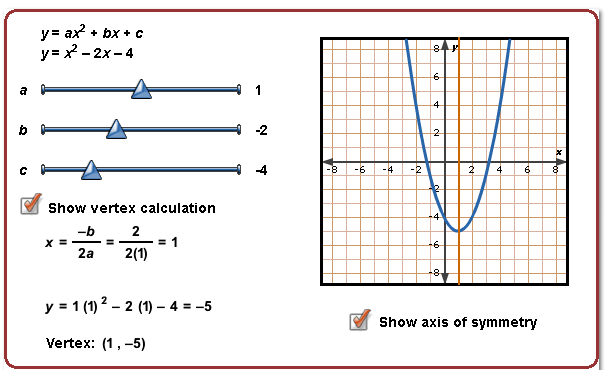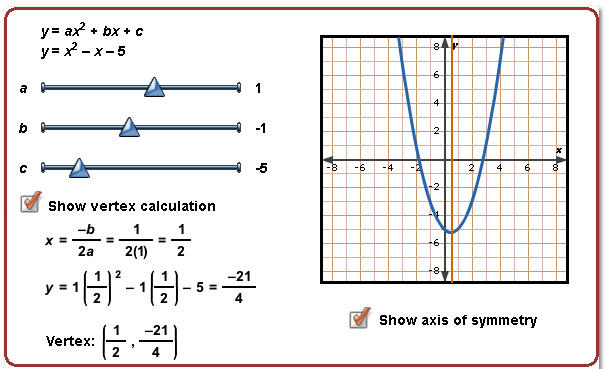

Assignment 2
Translations of a Parabola
by Debra Jackson
In assignment 2 problem 4, we are asked to graph the quadratic equation of a parabola y = 2x^2 + 3x - 4 and observe the translation when x is replaced by (x-4). This form of the equation, y = ax^2 + bx + c is referred to as the standard form of the equation and is a deviation of the quadratic parent function y = x^2. From this version of the equation we can determine the axis of symmetry from the formula x = -(b/2a) and the zeros from the quadratic formula. I have provided some examples of what happens when parameters are varied.
|
When the original equation y = 2x^2 + 3x - 4 is changed to y = 2(x-4)^2 + 3(x-4) -4. As you can see from the next picture, this change translates the graph 4 places to the right. We are also asked to change the equation to move the vertex of the graph into the second quadrant and to produce a graph concave down that shares the vertex. The blue graph represents moving the orginal graph into the second quadrant was created from the equation y = 2(x + 3/4)^2 - 41/8 + 10. The Green graph represents producing a graph concave down.
If the orginal equation is changed to factored form, we have y = (x - .85)(x + 2.35). If y is changed to 0 and the zero product property is used, we find that the x-intercepts are .85 and 2.35, which can be seen in the above graph.
If the original equatios is changed to vertex form (y = a(x - h)^2 +k), we have y = 2(x + 3/2)^2 - 1/2. Now the parameters are a, h, and k and can conclude the following:
1. If 0 < a < 1, the parabola transforms as a vertical shrink and if a > 1, the parabols transforms as a vertical shrink.
2. If a is positive, the parabola turns up and the vertex is a minimum. If a is negative, the parabola turns down and the vertex is a maximum.
3. H determines which way the graph is shifted horizontally. Ironically, if h is positive, the shift is to the left and if his is negative, the shift is to the right. It is also the x value of the vertex and x = h is the equation of the axis of symmetry.
4. K determines which way the graph is shifted vertically. If k is positive the graph moves up that many units, and if k is negative, the graph is shifted down that many units.
Here are a couple of examples of this:
 |
 |
|---|
Quadratic equations which graph to parabolas are an important part of the mathematics high school curriculum. Students must understand what effect changing the parameters a, b, c, h, and k have on what the graph will look like.
Below are animations of the parabola as the parameter changes.